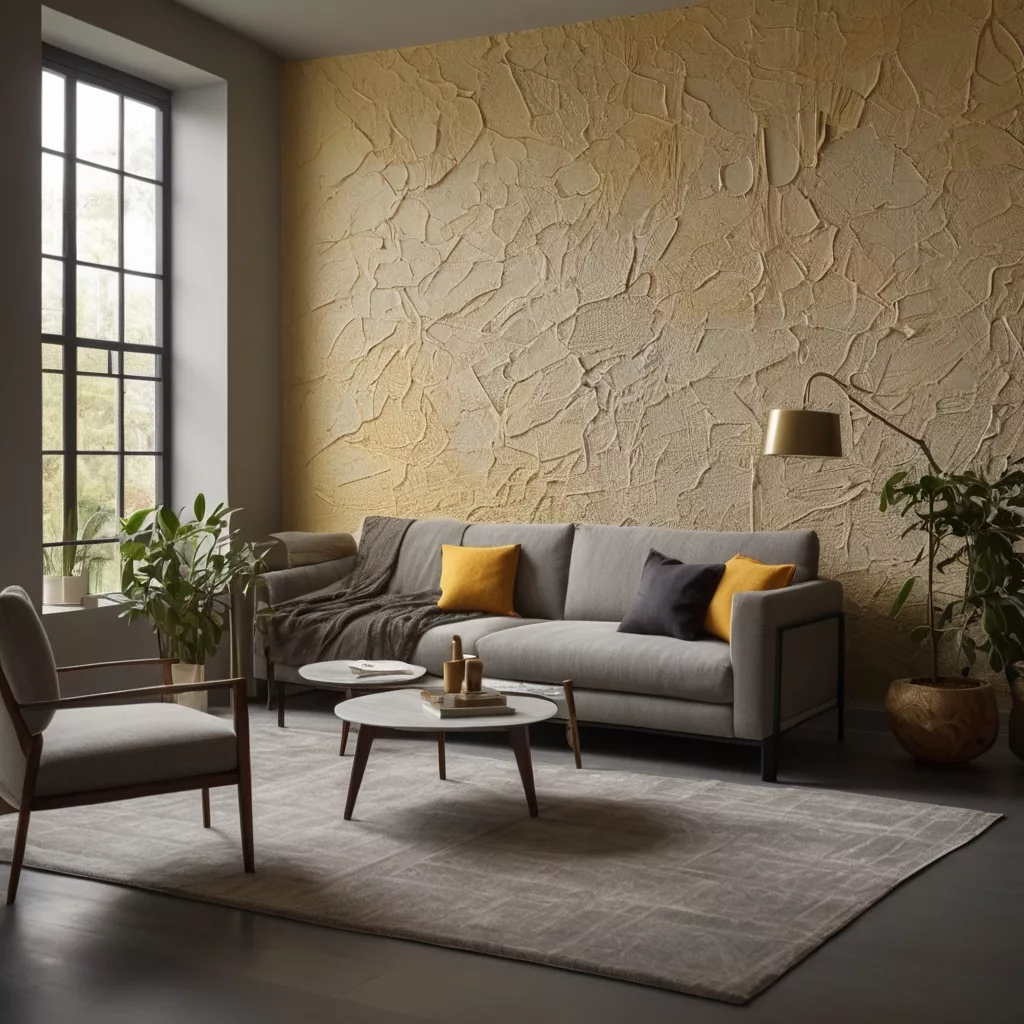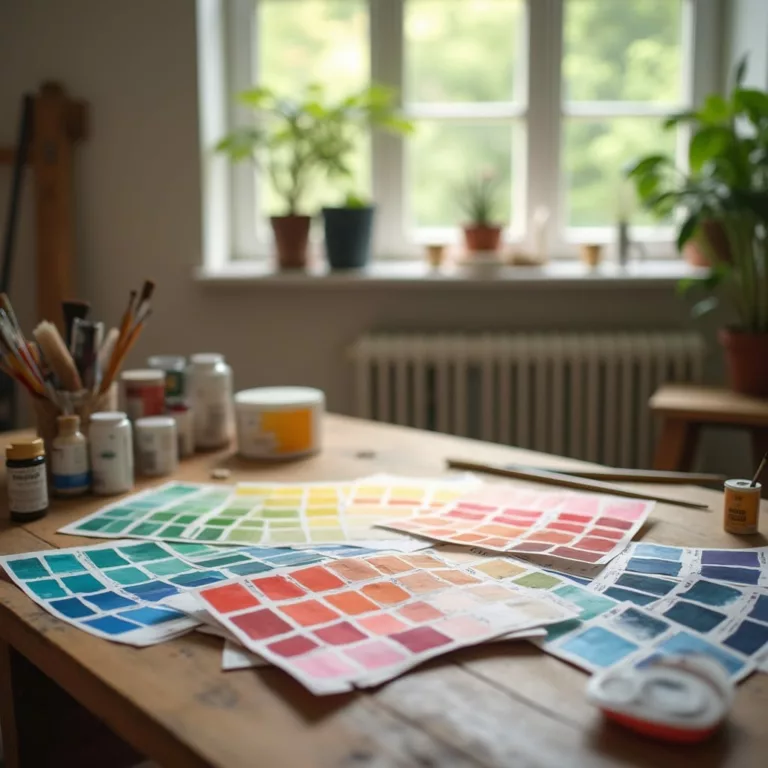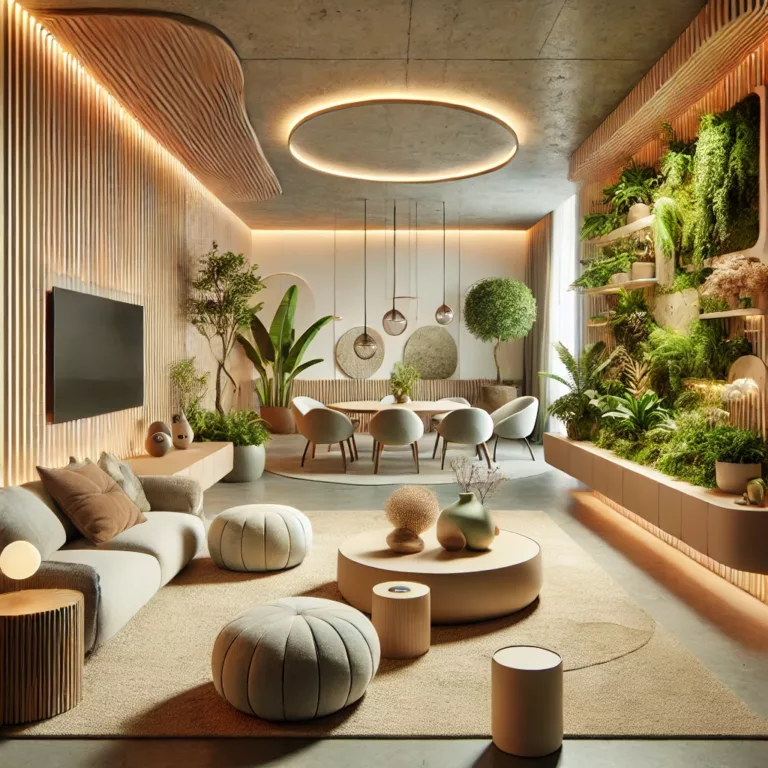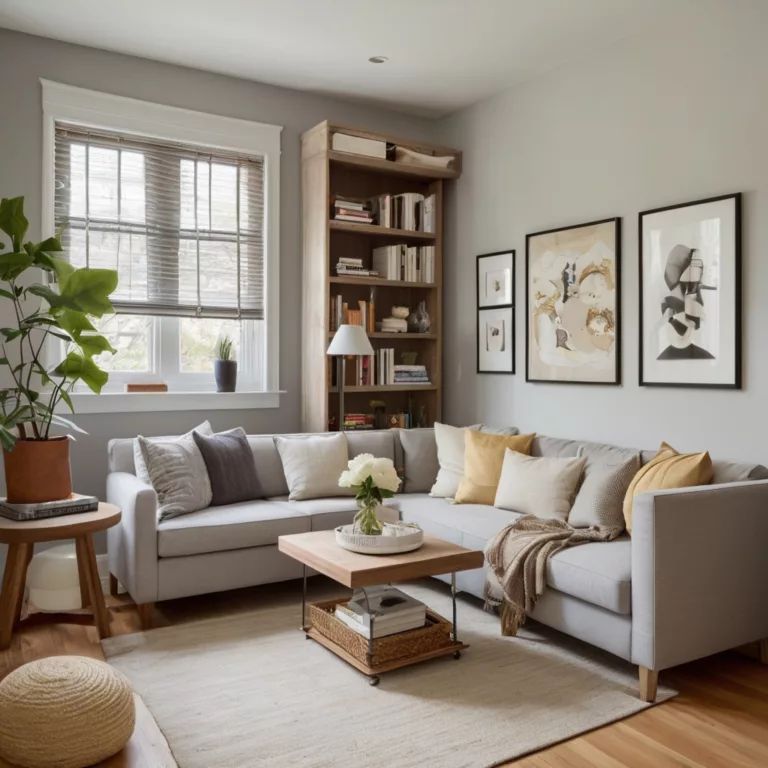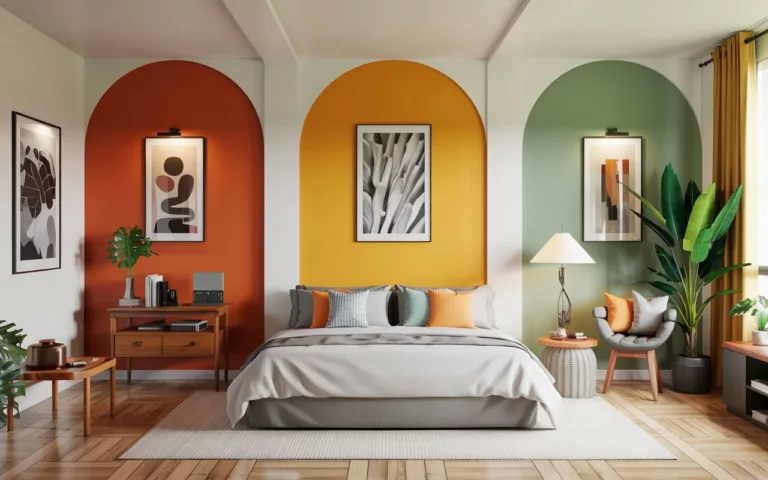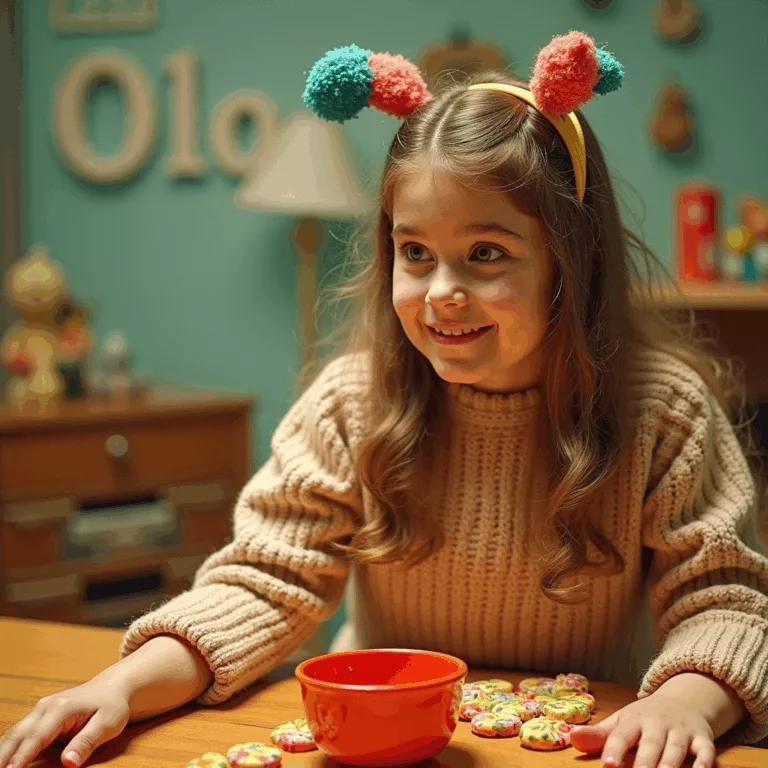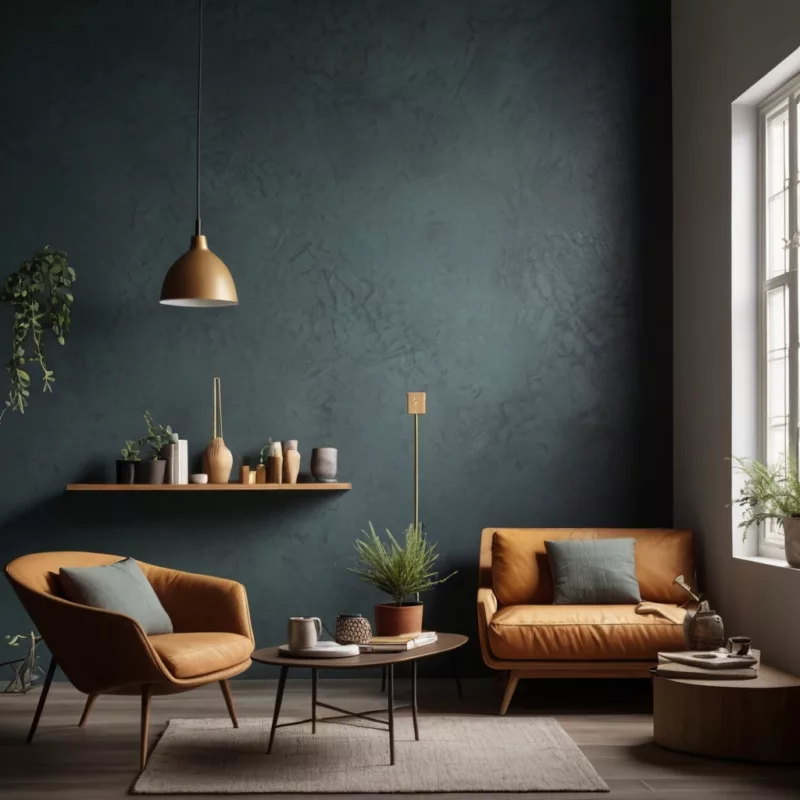
When it comes to interior design, wall textures often remain an underappreciated element despite their significant impact on a room’s overall aesthetic. The right combination of wall textures and home paints can transform ordinary spaces into extraordinary ones, creating depth, dimension, and character that flat painted walls simply cannot achieve. This comprehensive guide explores the fascinating world of wall textures that work with home paints, offering insights for both DIY enthusiasts and those looking to work with professionals.
Understanding Wall Textures and Their Relationship with Paint
What Are Wall Textures?
Wall textures are dimensional surface treatments applied to walls that create patterns, depth, and visual interest. Unlike flat, smooth walls, textured surfaces interact with light differently, casting subtle shadows and highlighting architectural features. When combined with the right paint colors and finishes, these wall textures can dramatically enhance your home’s interior design.
Why Wall Texture Matters for Paint Application
The relationship between wall textures and home paints is symbiotic—each affects how the other performs and appears. A texture can:
- Amplify or subdue certain paint colors
- Affect how light reflects off painted surfaces
- Determine which paint finishes will work best
- Hide imperfections in wall surfaces
- Create specific design aesthetics from rustic to contemporary
According to a 2024 survey by the Interior Design Association, homes featuring deliberate combinations of wall textures and home paints sell for approximately 4-7% more than comparable properties with standard flat painted walls.
Popular Wall Textures That Enhance Home Paints
1. Knockdown Texture
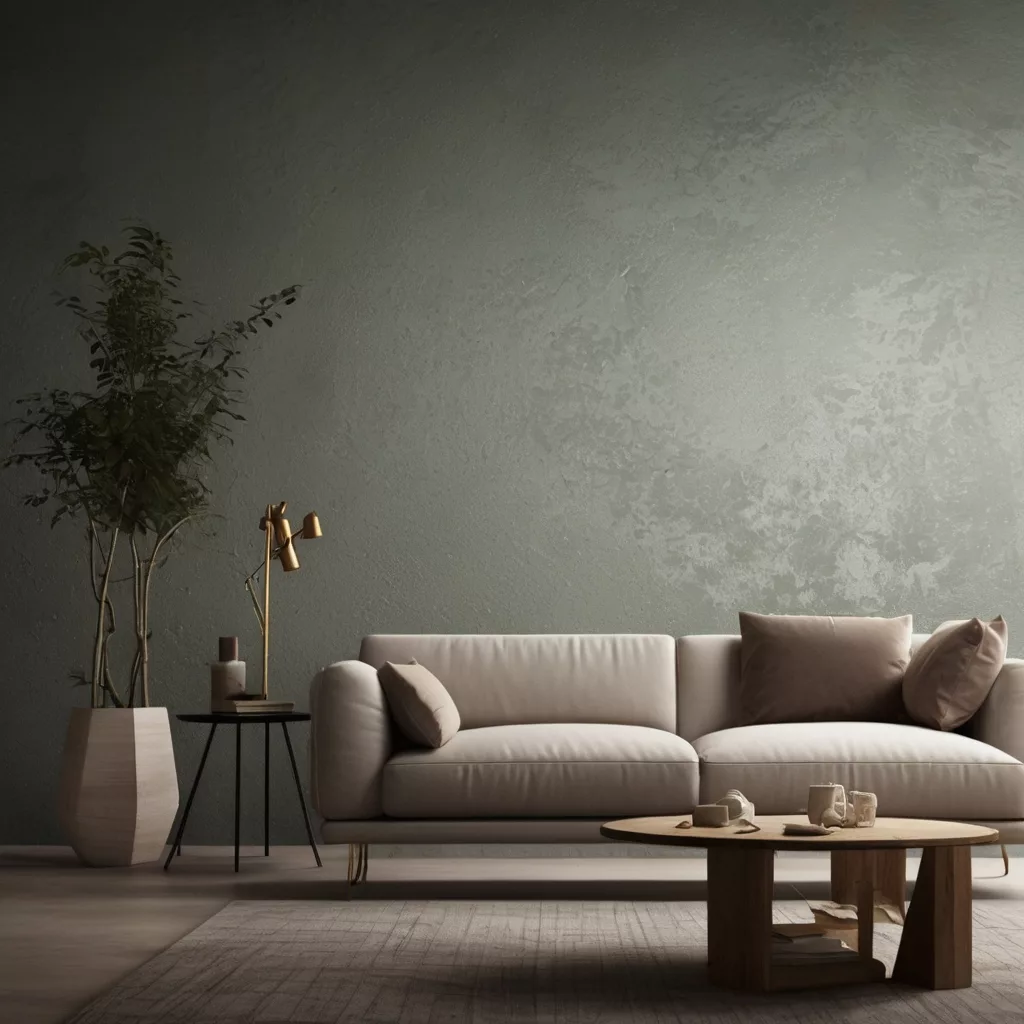
The knockdown texture features a stippled pattern that’s been partially flattened (“knocked down”) to create a subtle, mottled appearance resembling stucco or leather.
Best Paint Combinations:
- Matte or eggshell finishes
- Earthy tones like terracotta, sand, and olive
- Color-washing techniques for added dimension
Pro Tip: Knockdown texture works exceptionally well with home paints in Southwestern or Mediterranean-inspired designs, especially when using warm color palettes.
2. Orange Peel Texture
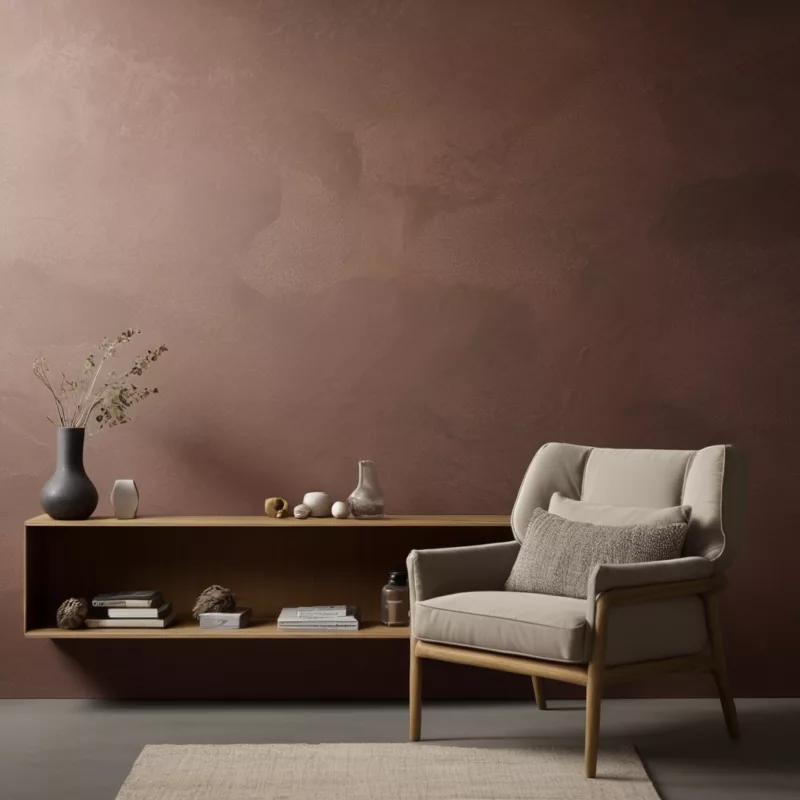
Named for its resemblance to the skin of an orange, this subtle texture provides gentle irregularities that add interest without being overwhelming.
Best Paint Combinations:
- Satin or semi-gloss finishes
- Most color families, from neutrals to bold hues
- Light-reflecting paints for small spaces
Interior designer Maria Santiago notes, “Orange peel texture is perhaps the most versatile of all wall textures that work with home paints. It provides enough interest to avoid flat boredom but doesn’t compete with other design elements.”
3. Popcorn Texture
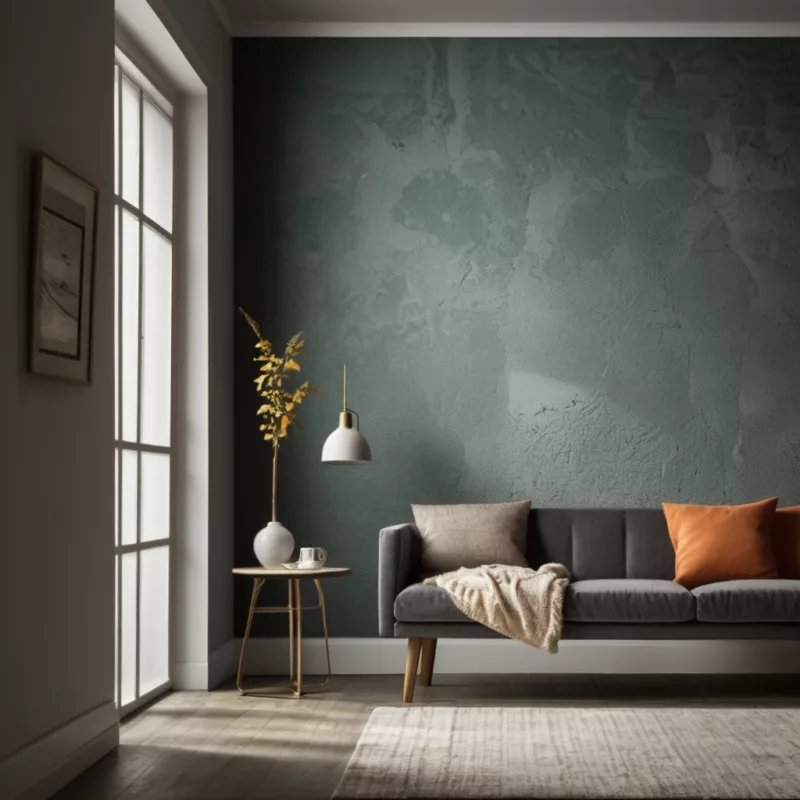
While often associated with ceilings, modernized versions of popcorn texture can work on walls in specific design contexts.
Best Paint Combinations:
- Flat or matte finishes only
- Light colors (whites, pastels)
- Special acoustic paints
Design Note: Contemporary applications of popcorn texture are more refined than their 1970s counterparts, featuring smaller particles and more uniform distribution, making them more compatible with modern home paints.
4. Skip Trowel Texture
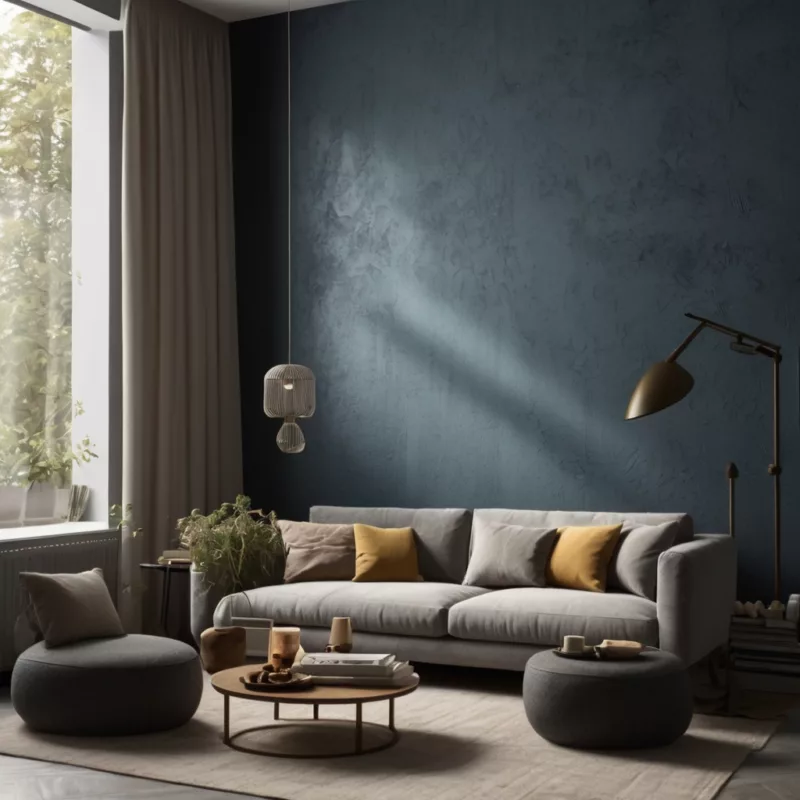
This Mediterranean-inspired texture features irregular patterns created by “skipping” a trowel across a surface, leaving behind varying deposits of compound.
Best Paint Combinations:
- Flat or matte finishes
- Limewash or mineral-based paints
- Multi-tonal color applications
Architectural historian Dr. James Wei explains, “Skip trowel creates a time-worn, old-world character that perfectly complements certain home paints, particularly those with mineral bases that enhance the texture’s natural depth.”
5. Venetian Plaster
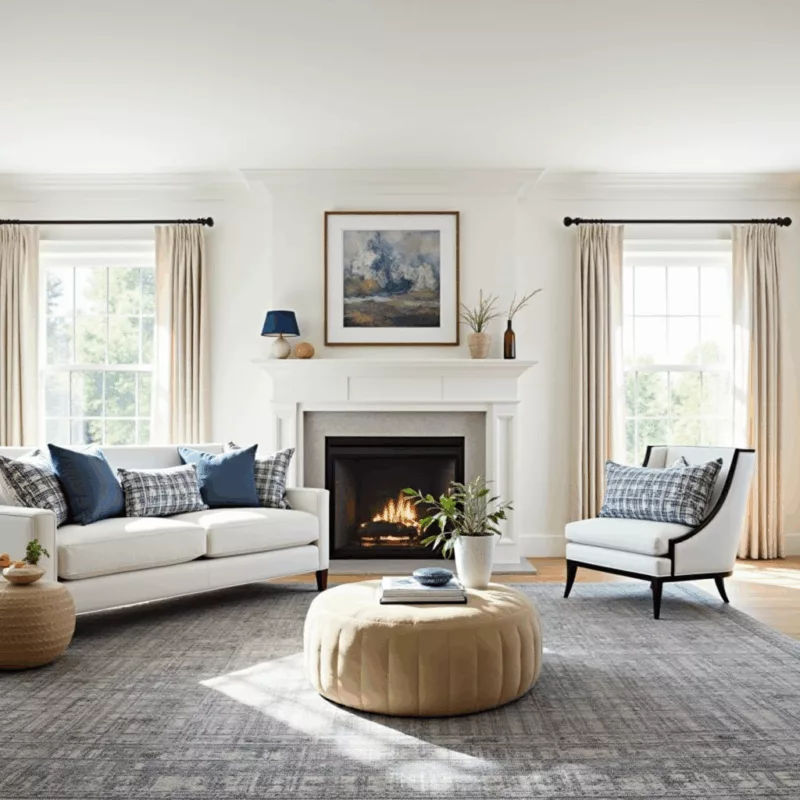
This luxurious wall treatment consists of marble dust mixed with plaster, applied in thin layers and burnished to create a depth and luminosity unmatched by other wall textures.
Best Paint Combinations:
- Specialized plaster tints rather than traditional paints
- Metallic additives for sheen
- Colors with depth like deep blues, emeralds, and burgundies
High-end interior designer Patricia Monteiro states, “Venetian plaster isn’t just a texture; it’s a premium wall finish that pairs magnificently with specialized home paints designed specifically for this application. The result is walls with incredible visual depth.”
Emerging Trends in Wall Textures and Home Paints (2025)
Sustainable Textured Finishes

The intersection of environmentalism and interior design has given rise to eco-friendly wall textures that work with home paints made from natural materials.
Popular Sustainable Options:
- Clay-based textures with natural pigment paints
- Recycled paper pulp textures with zero-VOC paints
- Cork-infused wall compounds with water-based finishes
According to the Green Building Council’s 2025 report, sustainable wall textures and home paints have seen a 38% increase in residential applications since 2023.
Digital-Inspired Textures
Technology’s influence on interior design has created fascinating new textures that mimic digital patterns or create optical illusions when combined with specific home paints.
Innovative Examples:
- Pixel-inspired textured patterns
- QR code-like relief textures that change appearance with lighting
- Parametric wall textures that create 3D effects with painted highlights
Tech design specialist Amir Khan explains, “These modern wall textures require precise application of home paints to achieve their full effect, often involving multiple color layers or specialized application techniques.”
Textured Accent Walls
Rather than texturing entire rooms, designers increasingly focus on creating dramatic accent walls where texture and paint work together as focal points.
Effective Combinations:
- Geometric relief patterns with contrasting paint colors
- Heavily textured natural materials with subtle paint washes
- Dimensional patterns highlighted with metallic paint accents
A 2025 survey by Home & Design Magazine found that 67% of interior designers recommended textured accent walls as the most cost-effective way to incorporate wall textures and home paints for maximum impact.
How to Choose the Right Wall Texture for Your Paint Color
Consider the Room’s Purpose

Different spaces benefit from different combinations of wall textures and home paints:
Living Areas:
- Moderate textures like orange peel or knockdown
- Paints with washable finishes in eggshell or satin
Bedrooms:
- Subtle textures that create tranquility
- Matte finishes in soothing colors
Kitchens and Bathrooms:
- Moisture-resistant textures
- Semi-gloss or gloss paints that resist humidity
Home Offices:
- Sound-dampening textures
- Focus-enhancing paint colors
Evaluate Natural Light
The way light interacts with wall textures and home paints significantly impacts the final appearance:
North-Facing Rooms:
- More pronounced textures to create shadows and interest
- Warmer paint colors to counteract cool northern light
South-Facing Rooms:
- Subtle textures to avoid overwhelming brightness
- Cooler paint tones to balance warm southern exposure
East/West-Facing Rooms:
- Adaptable textures that work with changing light throughout the day
- Neutral paint colors that maintain consistency despite light shifts
Lighting designer Sarah Johnson advises, “Always test your chosen combination of wall texture and home paint at different times of day before committing to the entire room. The appearance can change dramatically from morning to evening.”
DIY Application of Wall Textures for Home Paints
Essential Tools for Textured Wall Projects

Creating professional-looking wall textures that work with home paints requires the right equipment:
Basic Toolkit:
- Texture sprayer or hopper gun
- Various trowels (straight, curved, notched)
- Texture combs and brushes
- Premixed joint compound
- Texture additives
- Paint supplies (rollers, brushes, trays)
Step-by-Step Guide for Orange Peel Texture
- Prepare the surface:
- Clean walls thoroughly
- Apply primer suitable for textured finishes
- Mask adjacent surfaces
- Mix the texture compound:
- Combine premixed joint compound with water to desired consistency
- Test spray pattern on cardboard before applying to walls
- Apply the texture:
- Hold sprayer 18-24 inches from wall
- Use consistent sweeping motions
- Allow to partially set (about 10-15 minutes)
- Apply paint:
- Wait 24-48 hours for texture to completely dry
- Apply paint primer formulated for textured surfaces
- Use appropriate home paints in your chosen finish (typically satin works best)
- Apply with a thick-nap roller for even coverage
Home improvement expert Carlos Mendez recommends, “Practice your texture technique on sample boards first, then apply your chosen home paints to see the final result before tackling entire walls.”
Common DIY Texture Mistakes to Avoid
- Inconsistent application pressure resulting in uneven texture
- Improper mixing ratios leading to texture that’s too thick or too thin
- Rushing the drying process before applying home paints
- Using incompatible primers that don’t adhere properly to textured surfaces
- Selecting inappropriate paint finishes that either hide the texture or make it too pronounced
Professional Application of Wall Textures and Home Paints
When to Hire a Professional
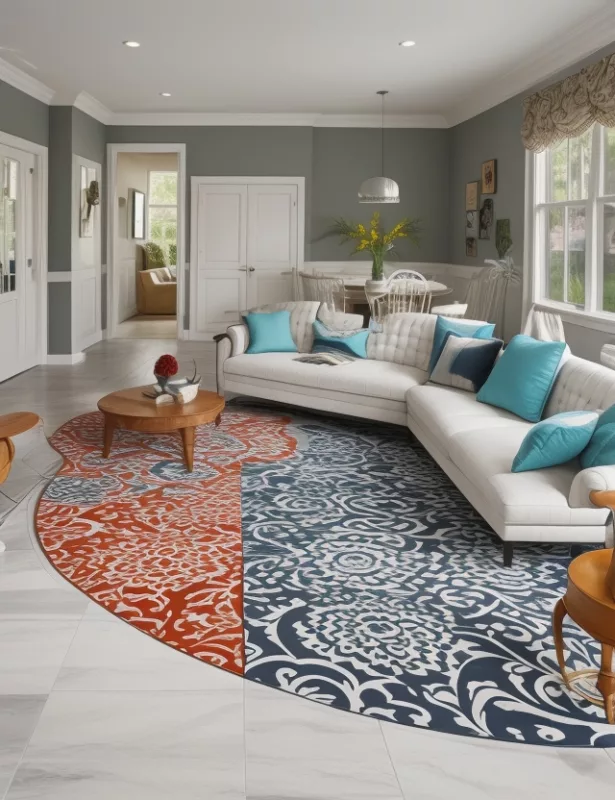
While DIY applications are possible, certain wall textures that work with home paints are best left to experienced contractors:
Consider professional help for:
- Venetian plaster and other specialized finishes
- Large-scale projects with multiple rooms
- Repairs to existing textured surfaces
- Historic restoration projects
- Complex multi-layer texture and paint techniques
Questions to Ask Your Contractor
Before hiring a professional to apply wall textures and home paints, ask:
- Can you show examples of similar texture and paint combinations you’ve completed?
- What preparation methods do you use for different wall surfaces?
- What types of materials do you recommend for our specific project?
- How many coats of paint will be needed for proper coverage on the texture?
- What maintenance will our chosen texture and paint combination require?
Contractor certification specialist Lisa Martinez recommends, “Ask specifically about their experience with the particular wall texture and home paint combination you’re interested in. Some contractors specialize in certain finishes and may not be experienced with all types.”
Maintaining Textured Walls with Paint Finishes
Cleaning Methods for Different Textures
Different combinations of wall textures and home paints require specific cleaning approaches:
Smooth to Light Textures with Washable Paints:
- Gentle wiping with microfiber cloths
- Mild soap solutions for spot cleaning
Moderate Textures with Satin or Semi-Gloss Paints:
- Soft brush attachments on vacuum cleaners
- Careful spot treatment with appropriate cleaners
Heavy Textures with Flat Paints:
- Regular dusting with extendable dusters
- Professional cleaning for serious stains
Touch-Up Techniques
When damage occurs to wall textures with home paints, proper repair involves:
- Cleaning the damaged area thoroughly
- Matching the original texture using similar application techniques
- Spot-priming the repaired texture
- Feathering paint outward from the repair to blend with surrounding areas
Professional painter Rebecca Wilson advises, “Keep records of your exact home paint colors and finishes. The biggest challenge in touching up textured walls isn’t matching the texture—it’s matching the paint color and sheen exactly.”
Environmental and Health Considerations
Low-VOC Options
Modern wall textures and home paints increasingly focus on environmental and health impacts:
Eco-Friendly Texture Options:
- Clay-based compounds
- Natural fiber-reinforced materials
- Recycled content textures
Health-Conscious Paint Choices:
- Zero-VOC formulations
- Natural mineral paints
- Anti-microbial options for humid environments
Environmental consultant Dr. Elena Rodriguez notes, “The interaction between wall textures and home paints can either amplify or mitigate VOC emissions. Certain textures can actually help absorb and neutralize VOCs from paints, creating healthier indoor environments.”
Allergy-Friendly Combinations
For those with sensitivities, specific combinations of wall textures and home paints offer advantages:
Recommended for Allergy Sufferers:
- Smooth or minimal textures that don’t trap allergens
- Anti-allergenic paint formulations
- Moisture-resistant combinations that prevent mold growth
Combinations to Avoid:
- Heavy, porous textures that collect dust
- Paints containing common allergens like casein
- Mold-susceptible texture and paint pairings in humid rooms
Case Studies: Successful Wall Texture and Paint Combinations
Modern Farmhouse Renovation
The Johnson family’s 2024 farmhouse renovation featured:
- Skip trowel texture in main living areas
- Limewash paint in warm white with gray undertones
- Contrast with smooth-textured trim in semi-gloss pure white
Designer comment: “The combination of rustic wall texture with specialized home paints created authentic character that couldn’t be achieved with either element alone.”
Urban Loft Conversion
A Manhattan loft conversion showcased:
- Concrete-look textured walls throughout the open floor plan
- Industrial-inspired paint colors in matte finish
- Metallic paint accents highlighting specific texture elements
Architect’s insight: “The dimensional quality of the wall textures allowed us to use deeper home paint colors without making the space feel smaller, actually enhancing the perceived volume.”
Historic Home Restoration
A 1920s Colonial revival restoration featured:
- Period-appropriate hand-troweled plaster textures
- Historical paint colors authenticated by preservation experts
- Specialized aging techniques to match original finishes
Preservation specialist: “Finding the right combination of historical wall textures that work with home paints authentic to the period required extensive research and custom mixing.”
Expert Opinions on Wall Textures and Home Paints
Interior Designers Weigh In
Sophia Lin, Celebrity Interior Designer:
“The most successful interiors consider texture as part of the color story. The wall texture and home paint should be conceived as a single design element, not separate decisions.”
Marcus James, Minimalist Design Specialist:
“Even in the most restrained spaces, subtle wall textures with carefully selected home paints create essential depth. Without texture, minimalist spaces risk feeling clinical rather than calming.”
Paint Manufacturers’ Perspectives
Technical Director, Benjamin Moore:
“We formulate specific paint lines expressly for different wall textures. The pigment distribution and light-reflecting properties must be calibrated differently for textured surfaces versus smooth ones.”
Chief Colorist, Sherwin-Williams:
“Certain color pigments interact uniquely with different wall textures, sometimes revealing undertones that remain hidden on smooth surfaces. This creates exciting design opportunities when properly understood.”
Cost Comparison: Different Wall Texture and Paint Combinations
Budget-Friendly Options
Orange Peel Texture with Standard Interior Paint:
- Materials: $0.75-1.25 per square foot
- DIY Labor: 2-3 hours per room
- Professional Installation: $1.50-2.75 per square foot all-inclusive
Knockdown Texture with Economy Paint:
- Materials: $0.85-1.50 per square foot
- DIY Labor: 3-4 hours per room
- Professional Installation: $2.00-3.25 per square foot all-inclusive
Mid-Range Options
Hand-Troweled Texture with Premium Paint:
- Materials: $2.25-3.75 per square foot
- DIY Labor: Not recommended for novices
- Professional Installation: $4.50-7.00 per square foot all-inclusive
Custom Textured Patterns with Designer Paint:
- Materials: $3.50-5.50 per square foot
- DIY Labor: Not recommended
- Professional Installation: $7.00-12.00 per square foot all-inclusive
Luxury Options
Venetian Plaster with Specialized Finishes:
- Materials: $8.00-15.00 per square foot
- DIY Labor: Not recommended
- Professional Installation: $20.00-35.00 per square foot all-inclusive
Artisanal Relief Textures with Custom Color Mixes:
- Materials: $12.00-25.00 per square foot
- DIY Labor: Not recommended
- Professional Installation: $30.00-60.00 per square foot all-inclusive
Regional Variations in Wall Textures and Home Paints
Geographical Preferences
Different regions favor distinct combinations of wall textures and home paints:
Southwest/West:
- Heavy textures (Spanish lace, heavy knockdown)
- Earth-toned paint palettes
- Sun-resistant formulations
Northeast:
- Smoother textures (skim coat, light orange peel)
- Traditional color schemes
- Humidity-resistant finishes
Southeast:
- Mold-resistant texture applications
- Paint with antimicrobial properties
- Lighter textures for cooling effects
Midwest:
- Durable textures that withstand temperature fluctuations
- Middle-of-the-road paint sheens (eggshell, satin)
- Weather-adaptive formulations
Regional building inspector Thomas Greene notes, “Even building codes can affect wall texture and home paint choices, with some regions requiring specific fire-retardant properties or moisture resistance ratings.”
Future Innovations in Wall Textures and Home Paints
Smart Texture-Paint Systems
Technological advances are creating interactive wall textures that work with home paints in unprecedented ways:
Emerging Technologies:
- Thermochromic textures that change appearance based on temperature
- Light-reactive textured surfaces with photochromic paints
- Conductive textured walls that function as touch interfaces when paired with specialized paints
Tech integration specialist Wei Chen predicts, “Within five years, wall textures and home paints will function as environmental sensors, changing appearance to indicate air quality, humidity levels, or even noise pollution.”
Biophilic Texture-Paint Systems
Nature-inspired combinations of wall textures and home paints are gaining popularity:
Innovations to Watch:
- Living wall textures with specialized breathable paints
- Biomimetic textures that replicate natural patterns
- Air-purifying textured surfaces with complementary paint systems
Environmental design researcher Dr. Nina Patel explains, “The next generation of wall textures that work with home paints will actively contribute to healthier indoor environments by mimicking nature’s ability to filter air and regulate humidity.”
Conclusion: Creating Your Ideal Wall Texture and Paint Combination
The perfect marriage of wall textures and home paints depends on numerous factors—room function, personal style, regional influences, and practical considerations. By understanding the unique relationship between texture and paint, homeowners can create spaces with remarkable depth, character, and visual interest.
Whether you’re renovating a historic property, building a new home, or simply refreshing your current space, remember that wall textures that work with home paints represent one of the most impactful design decisions you’ll make. The texture provides the canvas, while the paint brings it to life.
As interior designer Sophia Lin aptly states, “Walls are the largest design element in any room. Their texture and color set the tone for everything else. When you get the combination of wall textures and home paints right, you’ve already won half the design battle.”
Additional Resources
For further exploration of wall textures that work with home paints, consider these valuable resources:
- International Association of Texture Professionals
- Architectural Finishing Institute’s Guide to Wall Textures
- National Paint and Coatings Association
- Historic Wall Finishes Preservation Society
- Sustainable Materials Database for Textures and Paints
This article on wall textures that work with home paints is intended as a comprehensive guide only. Always consult with design and construction professionals for advice specific to your project.

